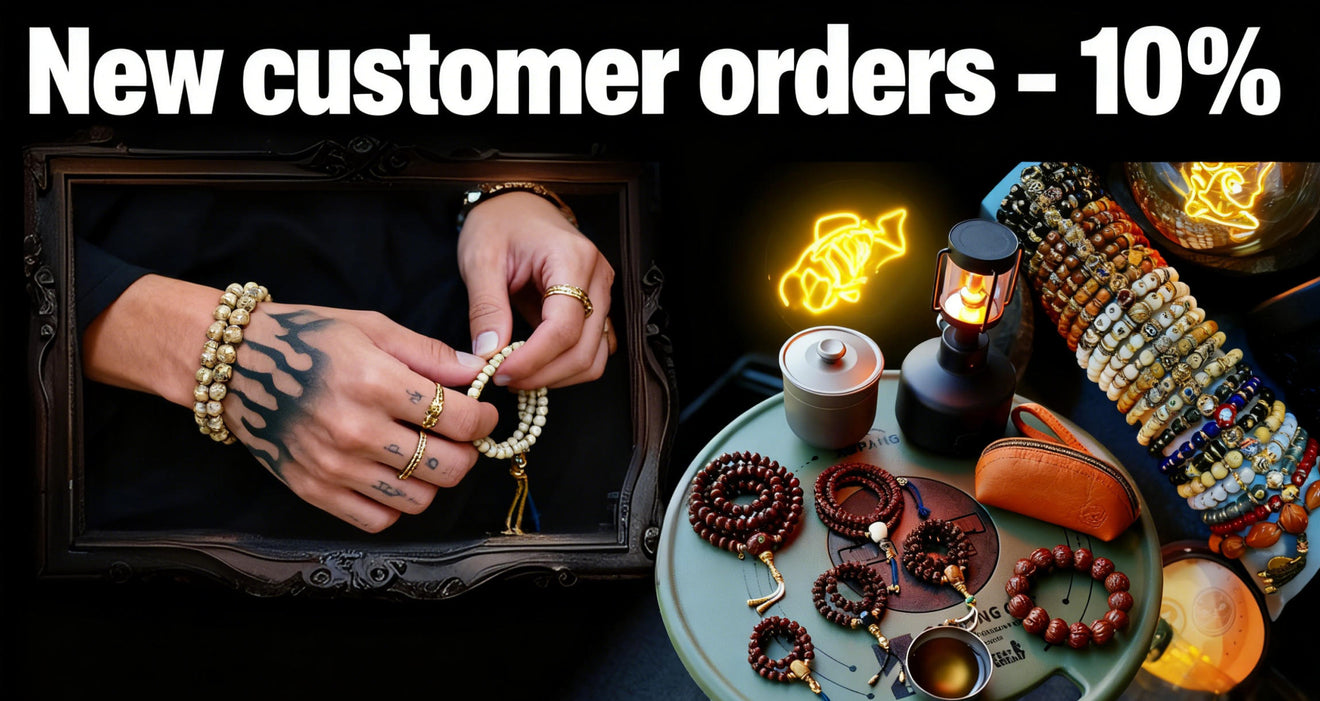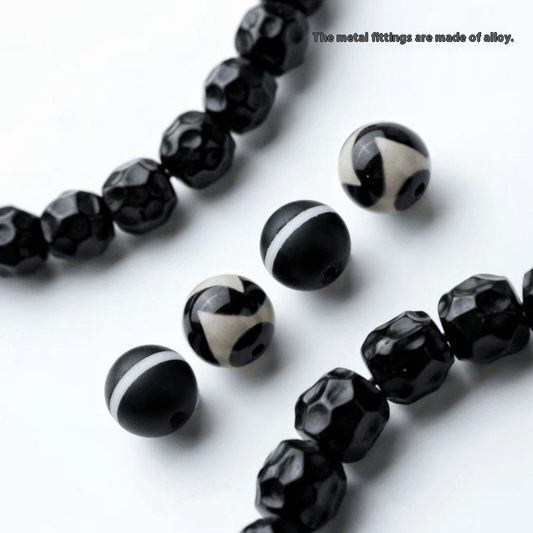stunningly created Fengshui bracelets aligning aura?

Within the refined texture within Himalayan sacred teachings are present two celebrated items: the painted thangka and the sacred bodhi bead. Separately, in personalized means, provide access to spiritual knowledge. The thangka, an elaborate depiction, features deities, cosmic designs, or scriptural scenes, supporting mindfulness exercises.
On the other hand, the bodhi bead, often crafted from rare crystals, planks, seeds, or skeletal fragments, is a tangible reminder of Buddha's nirvana under the bodhi tree. Holding these beads during prayer or meditation helps to focus the mind.
- Together, the thangka and the bodhi bead represent the path to liberation. They offer a tangible link to the age-old knowledge of Tibetan Buddhism.
Myths Carved in Camel Bones
Spanning bygone centuries, primordial treasures whisper tales concerning a world long gone. These are not luxurious objects crafted by suppressed empires, but unassuming camel bones etched with emblems that preserve the secrets of a bygone generation. Single shards carry the echo from a life lived, a journey navigated, and a connection to the sacred wisdom embracing which enfolds us all.
- These
- Fragments
- Are
A Symphony of Symbols: Unveiling the Secrets of Thangka Art
Tangkas are radiant paintings on canvas, meticulously crafted by Tibetan artists to depict exalted figures and scenes from Buddhist traditions. Each detail within a thangka is laden with value, forming a complex tapestry of visual narratives that guide the viewer on a inner journey. The tints used in thangkas are not merely aesthetic choices but carry deeper connotations, denoting different aspects of the Buddhist ideology. From the serene figures to the intricate textures, thangkas offer a peek into the rich world of Tibetan Buddhism, inviting us to contemplate upon its principles.
- Time-honored thangka art often depicts key Buddhist figures such as Buddha Shakyamuni, Bodhisattvas like Avalokiteshvara and Manjushri, and enlightened beings from various factions of Tibetan Buddhism.
- Beyond these representations lies a wealth of wisdom that can be accessed by those who investigate the symbolic language of thangkas.
Bodhisattva's Path to Enlightenment: Embodied in Beads and Bone
Upon the winding trail to nirvana, the Buddha employed symbols imbued with profound resonance. All bead and component held within them the heart of his instruction, demonstrating glimpses into the mosaic of reality. Alongside their profile, the Buddha transmitted profound discoveries that overcome the realm of material perception.
From those mantra beads, crafted from rare materials, dispersed vibrations that corresponded with the intense powers within. The material of a life form, meticulously transformed into amulets, served as tangible emblems of the impermanence essential to all phenomena.
Thangkas: Windows into Himalayan Spirituality
Thangkas colorful paintings on cloth serve as powerful representations of Himalayan spirituality. These intricate works of art, meticulously created with careful brushstrokes, depict a vast array consisting of Buddhist deities, mandalas, and scenes from ancient scriptures. Each thangka is an enlightening window for meditation and contemplation, offering understanding into the complex teachings of Buddhism.
- They are often used in ritual ceremonies as part of
- manifesting states of spiritual transcendence.
- Thangkas function as not merely decorative creations but rather gateways into the rich and intriguing world of Himalayan spiritual traditions.
Discover the Depth of Bodhi Beads: A Path to Mindfulness and Compassion
Each pellet on a bodhi bead mala whispers tales of ancient wisdom, guiding us on a path through the tranquil waters of mindfulness. As we grip these intricately made beads, our fingers trace the contours of every one, anchoring our concentration in the present moment. The gentle density of the beads against our palms serves as a tangible reminder to inhale, fostering a sense of serenity.
- Upon each bead that passes between our fingers, we enhance compassion, extending it first to ourselves and then outward to the world.
- Ancient traditions teaches us that mindfulness is a craft that requires patience and endurance.
Utilizing the rhythmic repetition of mantra or simply the mindful tracking of the beads, we escape from the relentless chatter of the mind.
The practice engaging with bodhi beads is a subtle invitation to renew our connection with ourselves and the world around us.
Unleashing Intention: Creating a Camel Bone Bracelet for Enlightenment
Focus represents a compelling drive in our lives, shaping our experiences and guiding us towards our intended direction. When we combine this intention with the venerable truths of crafting a camel bone bracelet, we create a potent synergy that can propel our spiritual growth.The camel bone itself is symbolically rich, representing toughness. Its natural beauty and ancient magnetism serve as a constant reminder of the fundamental dynamic within each of us.By scrutinizing each piece, pour intentions into the design. With every knot or tie, we embody our hopes, dreams, and aspirations for spiritual evolution. This act of creation becomes a meditative practice, merging us with our inner wisdom and guiding us on a voyage of awakening.- Use the bone’s natural designs to enhance symbolic resonance.
- Sense the spiritual currents channeling within your crafting.
- Wear it as a constant reminder of your commitment to growth and transformation.
The Enduring Impact of Camel Bone in Buddhism
In the rich tapestry embedded in Buddhist tradition, artifacts often hold profound symbolic meaning. Within these varied objects, camel bone stands out as a exceptional and absorbing element. Among history, this material has been incorporated in the crafting of various Buddhist artifacts, each imbued with specific meanings.
- Seen as a symbol of resilience and strength due to the camel's ability to last in harsh environments, camel bone often stands for spiritual fortitude.
- In addition, the color and texture in relation to camel bone are believed by some to hold auspicious connotations, symbolize purity and serenity.
Hence, camel bone has become a esteemed part of Buddhist lineage, serving as a tangible connection to the profound teachings through this ancient faith.
Thangka Works: Stories of the Divine
Within the ethereal realm of Tibetan Buddhism, Thangka paintings emerge as sacred portals to enlightenment. These magnificent works, meticulously crafted by skilled artists known as thangkapa, depict a myriad featuring vibrant deities, celestial beings, and mythical creatures. Each brushstroke fills profound spiritual significance, narrating ancient tales and philosophical notions.
- Covering a vast repertoire of Buddhist iconography, Thangkas serve as both devotional objects and instructional tools. Devout practitioners gaze upon these paintings during rituals and meditations, seeking to pursue spiritual wisdom.
- Elegantly fashioned with intricate details incorporating a spectrum of vibrant hues, Thangkas are considered windows into the divine. Any painting acts as a symbolic representation of the Bodhisattva's teachings and the path to liberation.
With the aid of their intense imagery and symbolism, Thangka paintings offer a glimpse into the rich religious traditions of Tibet. They are a testament to the enduring artistry of Tibetan art and its profound ability to enlighten.
Embracing the Duality: Thangkas and the Cycle of Life and Death
Thangkas, these colorful embroidered scrolls native to Tibet, provide an insightful exploration into the fleeting nature of life. Each intricate sketch depicts deities and beings engaged in the ongoing course of life and death, a collection of birth, growth, impermanence, and rebirth. The artists skillfully combine these concepts within the thangka's cosmos, highlighting the unity of all things. Through vivid figures, they invite us to contemplate on Buddhabelief our own path. The cycle revolves, a motion of coming and going, highlighting the preciousness of each moment. By embracing this duality, thangkas teach us to appreciate the beauty in both life's joys and sorrows.Loops of Belief: The Significance of Bracelets in Buddhist Practice
In the intricate tapestry of Buddhist practice, seemingly plain objects often hold profound meaning. Among these are bracelets, which serve as tangible symbols of devotion and commitment to the way of Buddha. Worn on the wrist, a bracelet works as a constant reminder of one's aspirations and aims. It can express the impermanence of life, fostering practitioners to remain centered in the present moment. Some bracelets may contain sacred marks, such as mantras or the names of Buddhas, which are viewed to generate positive energy and shield. Others are sometimes made from matter with spiritual significance, like sandalwood or lotus seeds, enhancing the bracelet's influence. Ultimately, the significance of a Buddhist bracelet resides far beyond its physical form. It becomes a powerful tool for contemplation, a catalyst to live in harmony with the teachings of Buddha, and a manifestation of one's unwavering devotion.